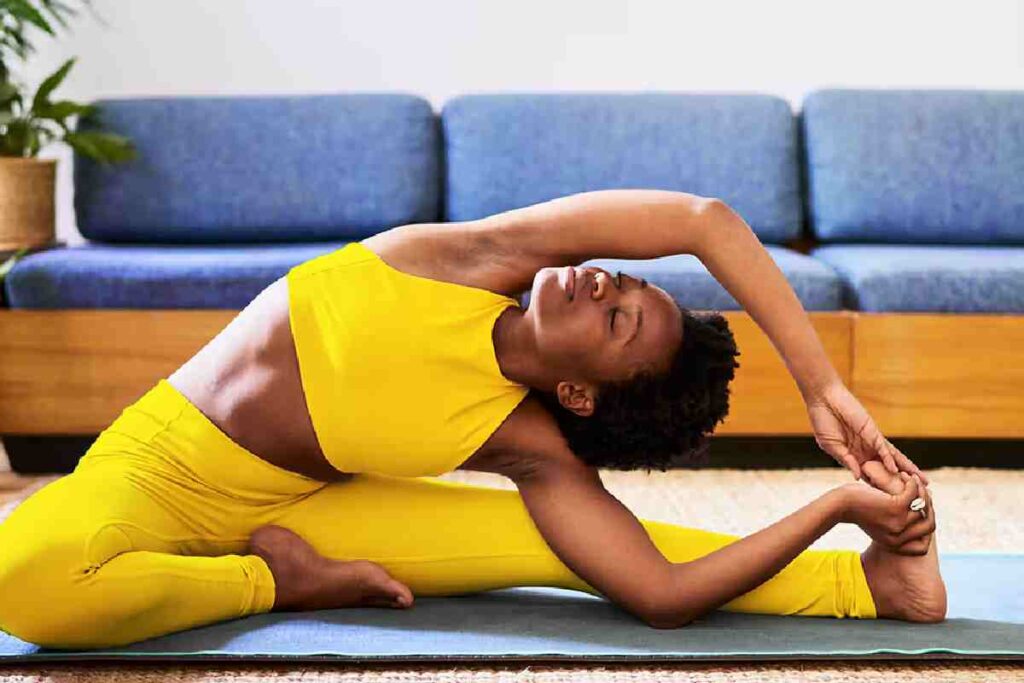Yoga for health: Yoga is an exercise that unites body, breath and mind. This exercise uses postures, and meditation, breathing exercisesto increasegeneral health. Yoga was developed as a spiritual trainingthousands of years ago. Nowadays, most people in the West practice yoga to exercise and relieve stress.
Table of Contents
The benefits of yoga
Yoga can increase your overall fitness and improve your posture and flexibility. Can also:
- Low blood pressure and heart rate.
- Help you relax
- Improve your self-confidence
- Reduce stress
- Improve your concentration
- Help you sleep better
- Supports digestion
- Improve your coordination
In addition, yoga can help with the following diseases:
- Anxiety
- back pain
- Depressions
Who should take precautions
Yoga in general is safe for the best. However, avoiding or changing poses in some yoga poses may be important if:
- you have high blood pressure
- You have glaucoma
- Has sciatica
- You’re pregnant
Be sure to let your yoga trainer know if you have any of these medical terms or any other injuries or medical troubles. A qualified yoga instructor should be able to help you find safe poses.
Yoga styles
There are different types or styles of yoga here. These range from mild to stronger. Some of the most ordinary yoga styles are:
- Ashtanga or power yoga. This type of yoga suggests a more challenging exercise. In these courses, you instantly switch from one pose to another.
- Bikram or hot yoga. You will do a sequence of 26 poses in a room with a temperature between 95 ° F and 100 ° F (35 ° C and 37.8 ° C). The aim is to warm up and stretch the muscles, ligaments and tendons and to purify the body through sweat.
- Hutha Yoga. It is occasionally used as a general term for yoga. It generally includes both breathing and posture.
- Integral. A type of gentle yoga that can include breathing exercises, singing, and meditation.
- Iyengar. A style that pays attention to precise body alignment. You can also hold the poses for long periods of time.
- Kundalini. Emphasize the causes of breathing in the postures. The aim is to release energy from the lower body so that it can move upwards.
- Viniyoga. This style adapts postures to the needs and abilities of individual person and coordinates breathing and postures.
How to get started
Find yoga classes at your local gym, gym, or yoga studio. If you are just starting out with yoga, start with a beginner class. Before the class, speak to the teacher and let them know about any injuries or illnesses you may have.
Ask about the trainer’s training and experience. Although most teachers have formal training, there are no certified yoga training programs. Pick a teacher who you enjoy working with and who doesn’t put you under so much pressure that you feel uncomfortable.
Also Read: 7 QUICK STRETCHES TO REDUCE BODY STIFFNESS WHILE WORKING FROM HOME
What to Expect
Best yoga classes last 45 to 90 minutes. All yoga styles have three basic components:
- breathing. Focusing on the breath is an important part of yoga. Your teacher can provide instructions on breathing exercises during the class.
- Postures Yoga postures or positions are a series of activities that help improve strength, flexibility, and balance. These vary in difficulty, from lying on your back on the floor to complicated balance poses.
- meditation. Yoga lessonsgenerally end with a short period of meditation. This will calm your mind and help you relax.
This is how you prevent injuries
While yoga is generally safe, if it is incorrectly positioned or if you try too hard, you can still injure yourself. Here are a somesuggestions to assist you stay safe while practicing yoga.
- If you have any health problems, talk to your doctor before starting yoga. Ask if there are positions that you should avoid.
- Start carefully and discover the basics before you try too hard.
- Choose a class that suits your level. If not, ask the teacher.
- Do not exceed your resting point. If you can’t play a position, ask your teacher to help you change it.
- Ask questions when you are unsure how to take a position.
- Bring a bottle of water and drink plenty of water. It is especially valuable in hot yoga.
- Wear clothes in which you can move effortlessly.
- Listen to your body. If you experience pain or fatigue, stop and rest.

